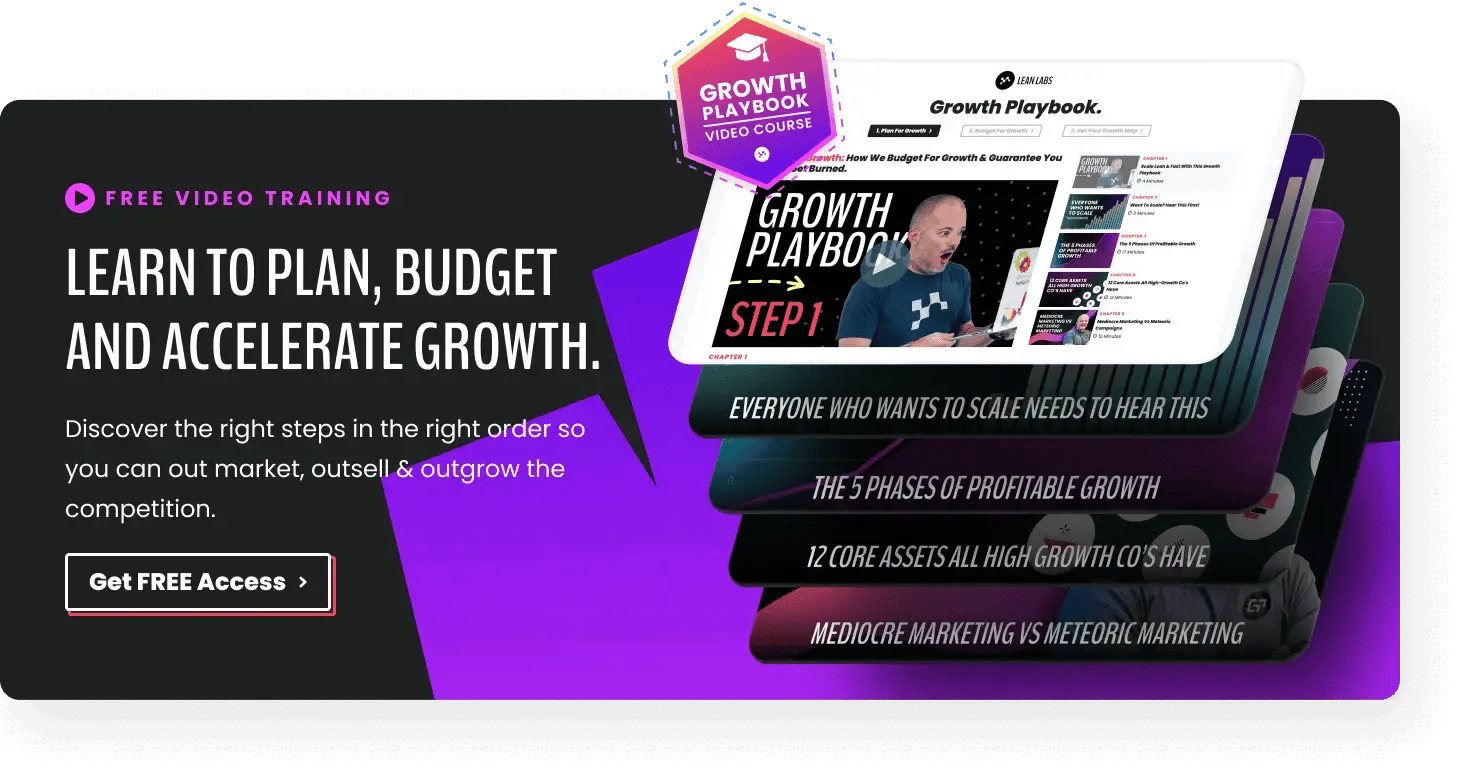Your sales reps need a well-defined sales process if you want them to be successful.
A sales process is a repeatable set of defined actions that your reps can follow to convert a potential customer to a paying customer. It acts as a roadmap, guiding their actions, so they always know what to do next without hesitation.
A typical sales process may be anywhere from 3 to 10 steps. Two of the most common are the 5 or 7-step sales processes, but you may find neither one of these approaches is exactly right for your company.
Textbook sales processes are a good start, but you can’t just pick one and implement it right away and expect results. You need to customize your sales process to your particular business, sales cycles — and, more importantly — to your target customers.
Let us show you what the 5 and 7-Step Sales Processes look like, what the pros and cons are for each one, and how you can create a customized sales process that gets your customers excited to buy.
VIDEO TRAINING
Nail Your Go-To-Market Strategy With This Proven Playbook.
Learn to plan, budget, and accelerate growth with our exclusive video series. You’ll discover:
- The 5 phases of profitable growth
- 12 core assets all high-growth companies have
- Difference between mediocre marketing and meteoric campaigns
Thanks for submitting the form!
We'll review the information you've submitted and respond to you just as soon as possible.
Pros and Cons of the 7 Step vs. 5 Step Sales Process
A customized sales process helps you attract more qualified leads, close them faster, and generate more revenue for your business.
However, a good sales process shouldn’t be complicated. It should be easy for your sales team to remember and execute.
At Lean Labs, we have spent several years refining and improving our sales system framework so we can ensure your sales team has the tools, resources, and strategies they need to perform their jobs to the best of their ability.
Contact us today to find out how we can help you develop and implement a customized sales system framework to grow your business and generate more revenue.
Keep reading to learn more about the 5 and 7-step sales processes.
The 5-Step Sales Process
- Initial Contact & Rapport Building: this is the stage where your sales representative introduces themselves to your prospect.
- Needs Discovery: your sales representative asks your prospect a series of questions to determine what their needs are.
- Offer a Solution: your sales representative analyzes your prospect’s needs and demonstrates how your product can help.
- Handle Objections & Close the Sale: your sales representative addresses any concerns your customer has that is preventing them from buying your product and closes the sale.
- Follow Up, Repeat Business & Referrals: your sales representative follows up with your new customer to make sure they are happy with their purchase, to upsell when applicable, and to ask for referrals.
The Pros and Cons
Compare the pros and cons of the 5-Step Sales Process:
Pros
- A shorter sales cycle can help you work through leads faster.
- If your prospect wants results quickly, they may find it comforting that you are moving faster.
- Shorter processes are often easier for sales team members to remember and execute.
Cons
- Prospects can feel like they are being rushed or pressured.
- Your prospects may feel unsure about exactly what they are purchasing if your sales team rushes too quickly.
The 5-Step Sales Process seems simple enough, right? The problem is, your customers may need a shorter or longer process to get them to part with their hard-earned dollars.
Sales is like dating. You rush your prospect, and you’re likely to turn them off, but if you take your time, you’re likely to bore them, which drives them away.
Depending on what your product is and who your target audience is, the 5-Step Sales Process could work well, or it might not work at all.
Related Reading: Rapidly Increase Revenue With a Sales System
The 7-Step Sales Process
- Prospecting: This is the stage where your sales representative looks for prospects and generate leads.
- Preparation: your sales representative prepares all the information necessary to contact a new lead.
- Approach: your sales representative makes the first contact with the new lead using one of three methods. He can present them with a gift (premium approach), he can ask leading questions (question approach), or he can give them a demonstration of your product (product approach).
- Presentation: listen to your prospect’s needs and demonstrate how your product can help them.
- Handling Objections: answer any questions they have and address their concerns.
- Closing: take the payment and close the sale.
- Follow Up: ensure they are satisfied with their purchase, upsell when you can, and ask for referrals.
The Pros and Cons
Compare the pros and cons of the 7-Step Sales Process:
Pros
- A longer sales process can help give your prospects time to trust you.
- Your sales team will have many touch points with prospects. This can help them determine if the prospect is a good fit for your services.
- The extra touch points can help your sales team accurately provide a quote for your services.
Cons
- Prospects may be looking for a quicker resolution to their problem and could become frustrated as the sales process draws out.
- Your sales team may struggle to execute all of the steps effectively and may start to combine or skip steps.
The most significant difference between these two sales processes is the preparation and approach included in the 7-Step Sales Process.
The 7-Step Sales Process works better for leads that need more warming up before they willingly open their wallets for you.
Both of these processes provide a blueprint, a good place to start. And they are proven to work, to a point, but you need to tailor your process to your business. A customized and optimized sales process is key to producing the best results for your company.
Which Process Should You Choose — A Customized One
It’s not likely that you can just take a prefab sales framework and plug into your business and see success. Every business operates differently and provides unique value to their clients.
You need to find out what works best with your target customers. Companies often create a sale process based on the way they want to sell, instead of on the way their customers want to buy.
An effective sales process should be adaptable and be able to suit different selling situations and customer needs.
At Lean Labs, we specialize in helping our clients grow their business by looking at the “big picture view” of your company and help you determine what you need to improve or change to see your revenue rise.
Contact us to speak with one of our growth experts so we can customize a sales system framework that generates more qualified leads and revenue for your business.
Ryan's experience ranges from higher education to SMBs and tech startups. When not doing digital marketing, he's sure to be enjoying some kind of nerdy pastime.






